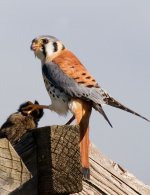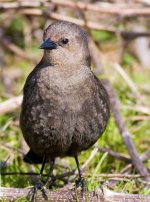chrisduval
Well-known member
OK, here's my situation:
I'm a young-ish birder in the Pacific Northwest and am interested in birding while hiking and on family vacations to the coast and to the mountains. I have a Nikon digiscope setup (Fieldscope 82mm and CP 4500) but am interested in the versatility of a DSLR. My three year old daughter and I are starting to take walks together and I'd love to be able to photograph while we're out as well.
I am thinking of the following setups:
1. 400 EF 5.6 and the TC 1.4
2. 300 f/4 (with IS) and TC 1.4
I am concerned about lack of IS (#1). In your experience, is IS necessary - there will be definite times that I will be out in not directly bright sunlight. Early morning, late afternoon - but nothing too dark. I just want to try to get around without having to lug a tripod around with me.
A fellow Oregonian young birder and fantastic photographer, Noah Stryker, (see his pictures at www.noahstryker.com) uses the 300 f/4 lens (with IS) and a TC 1.4. His response is that IS has been very helpful in low light conditions and that the extra versatility has also been a positive factor as well.
Again, I don't mind occasionally needing to use a tripod but I primarily am interested in a set-up where I can be tripod-free.
Thanks for you advice!
Chris
I'm a young-ish birder in the Pacific Northwest and am interested in birding while hiking and on family vacations to the coast and to the mountains. I have a Nikon digiscope setup (Fieldscope 82mm and CP 4500) but am interested in the versatility of a DSLR. My three year old daughter and I are starting to take walks together and I'd love to be able to photograph while we're out as well.
I am thinking of the following setups:
1. 400 EF 5.6 and the TC 1.4
2. 300 f/4 (with IS) and TC 1.4
I am concerned about lack of IS (#1). In your experience, is IS necessary - there will be definite times that I will be out in not directly bright sunlight. Early morning, late afternoon - but nothing too dark. I just want to try to get around without having to lug a tripod around with me.
A fellow Oregonian young birder and fantastic photographer, Noah Stryker, (see his pictures at www.noahstryker.com) uses the 300 f/4 lens (with IS) and a TC 1.4. His response is that IS has been very helpful in low light conditions and that the extra versatility has also been a positive factor as well.
Again, I don't mind occasionally needing to use a tripod but I primarily am interested in a set-up where I can be tripod-free.
Thanks for you advice!
Chris






